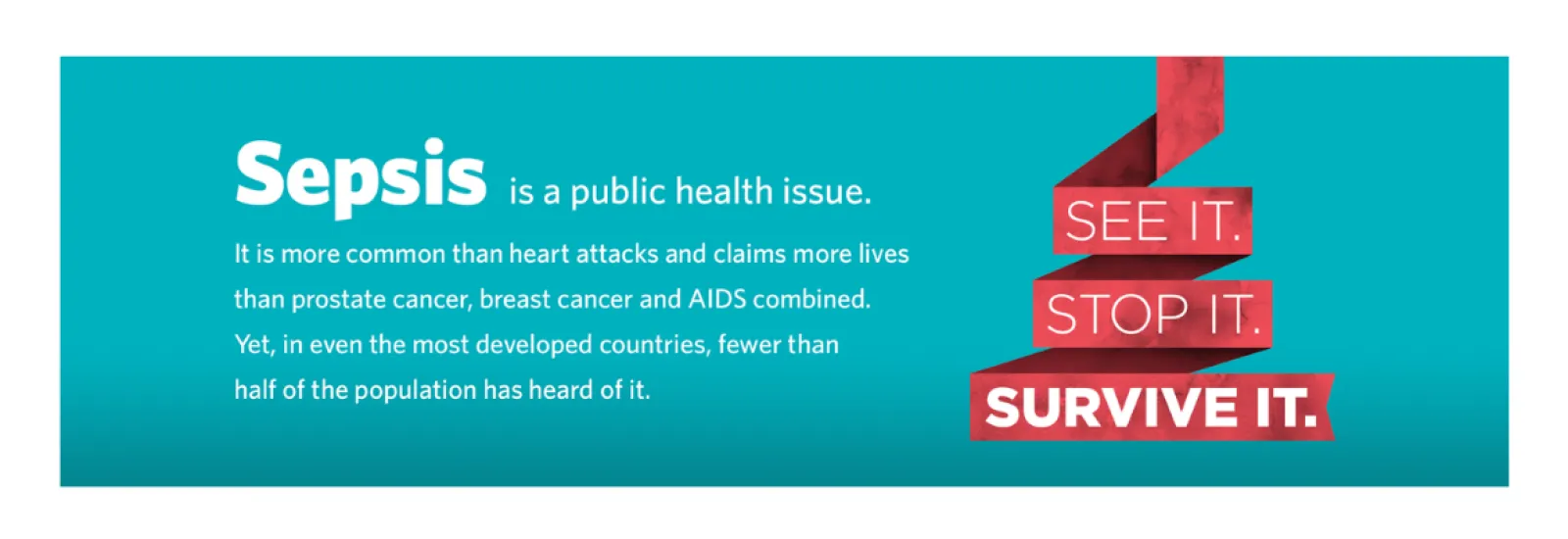
Sepsis FAQ
Shared from the Indiana Patient Safety Center
According to the Global Sepsis Alliance, sepsis
is the leading cause of death following an infection, but with early detection
and proper treatment, deadly consequences can be diminished. The following FAQ is according to the Centers for Disease Control and
Prevention (CDC) and the Sepsis Alliance and aim to demystify the often
misunderstood and unrecognized deadly complication to infection.
What is sepsis? Sepsis is the body's overwhelming and potentially life-threatening response to an infection. It can lead to tissue damage, organ failure, and even death.
What causes sepsis? Any type of infection, anywhere in the body, can cause sepsis. According to a CDC evaluation, over 90% of adults and 70% of children who got sepsis had a health condition that may have put them at risk. This can include seemingly minor infections. Four types of infections that are often linked with sepsis are:
- Lungs (pneumonia)
- Kidney (urinary tract infection)
- Skin (new or worsening injury)
- Abdomen/Gut
- Are under age 1 or over age 65
- Have a weakened immune system or chronic illness (diabetes, cancer, kidney, liver disease, splenectomy, dialysis, etc.)
- Have a severe burn or wound
- Have an indwelling catheter or intravenous (IV)
- Recently had surgery or have been hospitalized
- Shivering, fever, feeling very cold
- Extreme pain or feeling worse than ever
- Pale or discolored skin
- Sleepiness, difficulty waking up, confusion
- I feel like I might die
- Shortness of breath

How is
sepsis diagnosed? Sepsis
can be difficult to diagnose because it shares many signs and symptoms with
other conditions. Health care providers look for signs of sepsis likeincreasedheartandbreathingratesandtemperature.Theyalsorelyonlabteststhat check for signs of infection that
may not be visible to the naked eye. When
it comes to sepsis, remember - It's aboutTIMETM
How is sepsis treated? Sepsis is a serious complication of infection that should be treated in a hospital. Health care providers typically administer antibiotics and work to treat the infection, keep vital organs healthy, and prevent a drop in blood pressure.
In some cases, other types of treatment may be required, including oxygen and intravenous (IV) fluids, or assisted breathing with a machine or kidney dialysis.
In
severe cases, surgery may be required to remove tissue damaged by infection.
How can I prevent sepsis? While there is no way to completely prevent the possibility of sepsis, there are many ways to reduce your risk including:
- Be vaccinated. Protect yourself against the flu, pneumonia, and other infections that could lead to sepsis. Talk to your health care provider for more information.
- Be thorough. Properly clean and treat scrapes and wounds and practice good hygiene - i.e. hand washing, bathing regularly, and brushing teeth regularly.
- Be vigilant. If you have an infection, look for signs like fever, chills, rapid breathing and heart rate, confusion, and disorientation.
Are there any long-term effects of sepsis? Many sepsis survivors recover completely, and their lives return to normal. However, some people may experience organ damage, tissue loss, or may require amputation of arms or legs.
Additionally,accordingtotheSepsisAlliance,post-sepsissyndromeisacondition
that affects up to 50 percent of sepsis survivors. They are left with physicaland/or
psychological long-term effects, suchas:
- Muscle weakness
- Fatigue
- Difficulty swallowing
- Cloudy thinking
- Difficulty concentration
- Poor memory
- Difficulty sleeping
- Sadness
- Anxiety
If you suspect that you or a loved one has post-sepsis syndrome, talk to a health care provider about resources for emotional and psychological assistance.
For more information, visit SurviveSepsis.com

